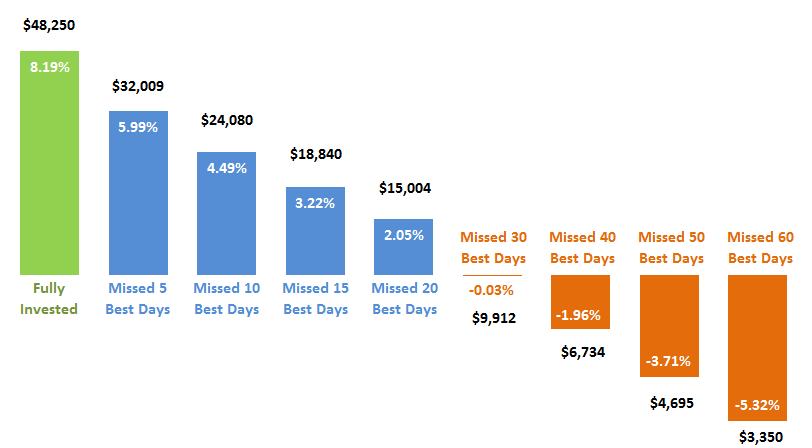Earlier this month in our Outlook, we shared our view that markets would experience elevated volatility but that there still were opportunities for investors, including in stocks. We explained why we believed an imminent recession in the U.S. was unlikely and cautioned investors against panicking out of the market.
The past few weeks have borne out our expectations of volatility, and stock markets have posted steep declines. Despite the macro fears dogging the markets, my view remains that the U.S. is positioned for slow growth in 2016—not recession.
In times like these, the best thing that investors can do is to stay level headed. This is a belief I have held more over 40 years—including through the difficult financial markets of the 1970s, the recession of 1990, the bursting of the dot.com bubble in the early 2000s, and more recently, the Great Recession.
I recognize that for many investors, it’s hard to avoid the temptation to time the stock market when headlines are so negative. What’s important to remember is that market conditions can also improve quickly and with little notice. As shown in Figure 1, being out of the market for even a few days can have a significant impact on results.
Figure 1. Timing the Market Could Be Costly
S&P 500 Returns and the Growth of $10,000 over 20 Years (1996-2015)
Source: Morningstar. Data ranges from 1/1/1996 through 12/31/2015. Past performance is no guarantee of future results.
The sources of market volatility are always changing, which can make some investors feel like “this time is different—this time the market won’t come back.” After all, when markets were worried about the uncharted territory the global economy was in when oil was trading at $145 a barrel in 2008, who would have thought we would see prices in $20s? For me, when I think about the many problems that the markets have surmounted, I’m reminded of the long-term resilience of the global markets and economy.
In this environment, I believe investors can be well served by reaching out to their financial advisors. Instead of trying to time the market on your own, you and your advisor can discuss the growing array of choices that you may have to diversify and potentially stabilize your portfolio in these volatile markets. Depending on your needs, these may include a market neutral or convertible allocation or a strategy that seeks lower-volatility participation in the U.S. or global equity markets.


